Manuel is working his way through all the LGBT-themed HBO productions.
Last week we talked about the towering achievement that was Angels in America, and reading everyone’s pieces about the Mike Nichols/Tony Kushner miniseries for last week’s Hit Me With Your Best Shot was a treat. Angels was the clearest example yet of HBO’s commitment complex, fully fleshed-out (mostly male, yes) LGBT characters. It wasn’t, of course, as we have seen these past few months, out of character. Indeed, by looking at three testosterone-driven TV series we’ll see how by the mid-2000s HBO had all but become a one-stop shop for fully-realized LGBT characters.
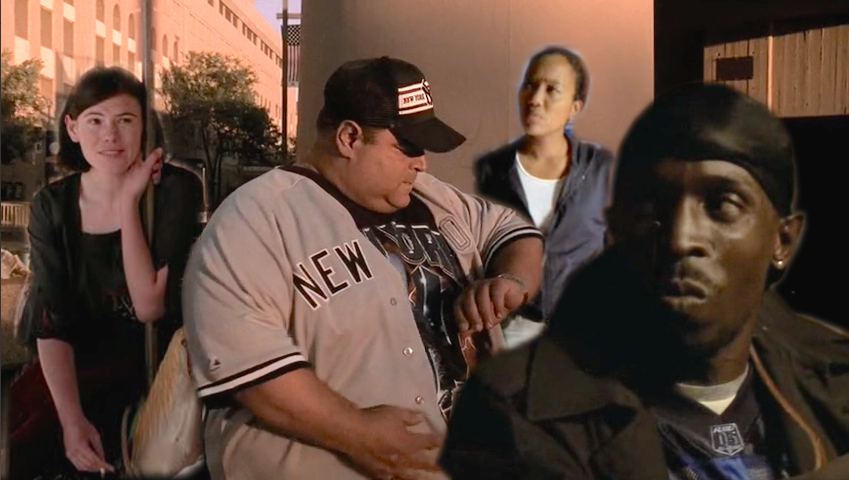
Continuing what we did when we revisited Six Feet Under, I figured we’d focus on one episode per series, both as a way to focus the discussion but also as a way of making it accessible to fellow newbies. That said, I’m eager to hear from die-hard fans of any of these shows.
The Wire - “Old Cases” (June 23, 2002)
It was through compiling this very very long list of 100 Queer Characters of Color in TV and Film, that I came to learn of Omar Little and detective Shakima Greggs. Yes, I know, I know, The Wire is supposed to be brilliant but I’ve yet to sit down through its 60 episode run. Much in the same vein as Oz, The Sopranos and other early HBO dramas, The Wire takes it upon itself to not only present engaging narratives to hook viewers, but it does so while also speaking of the larger socio-economic ills that afflict contemporary America. Centered on the drug scene in Baltimore through the eyes of law enforcement and drug dealers, the show constantly asks us to question the larger systemic issues that riddle Baltimore’s projects.
more on all three shows after the jump...
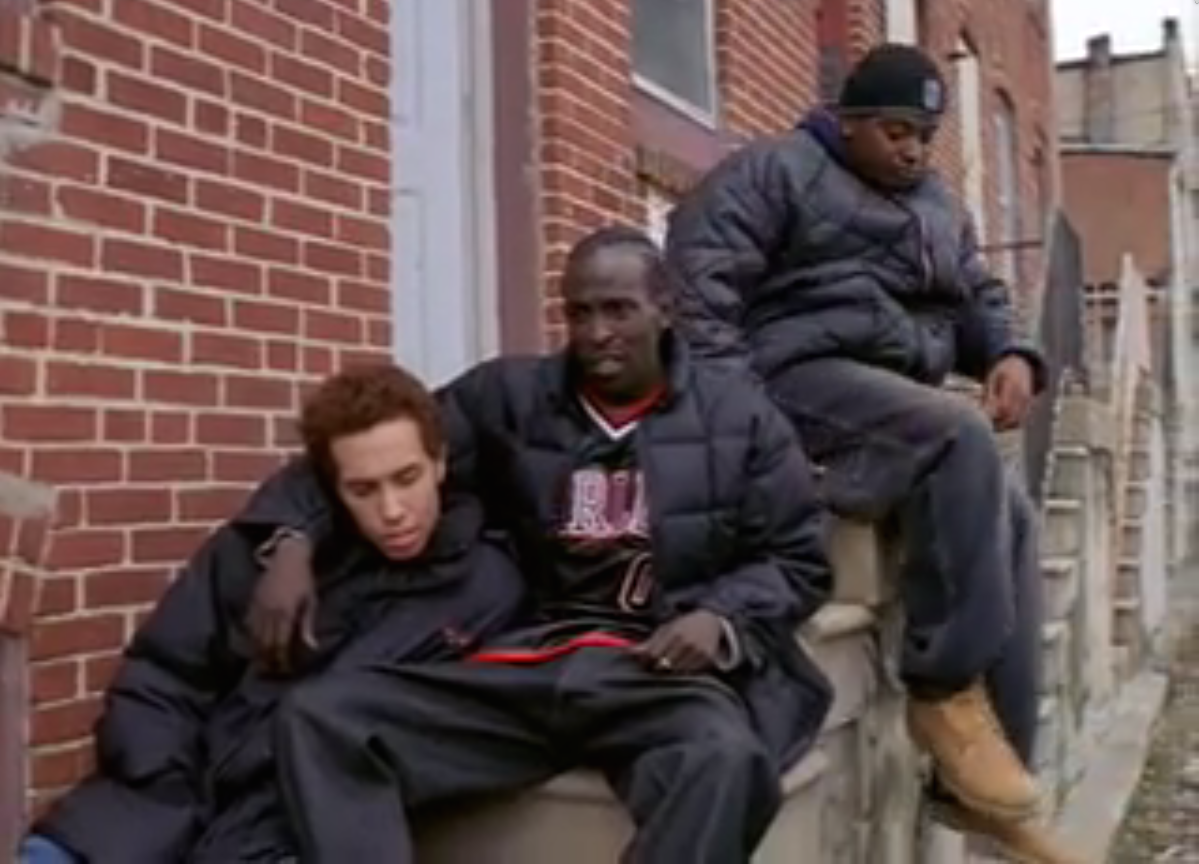
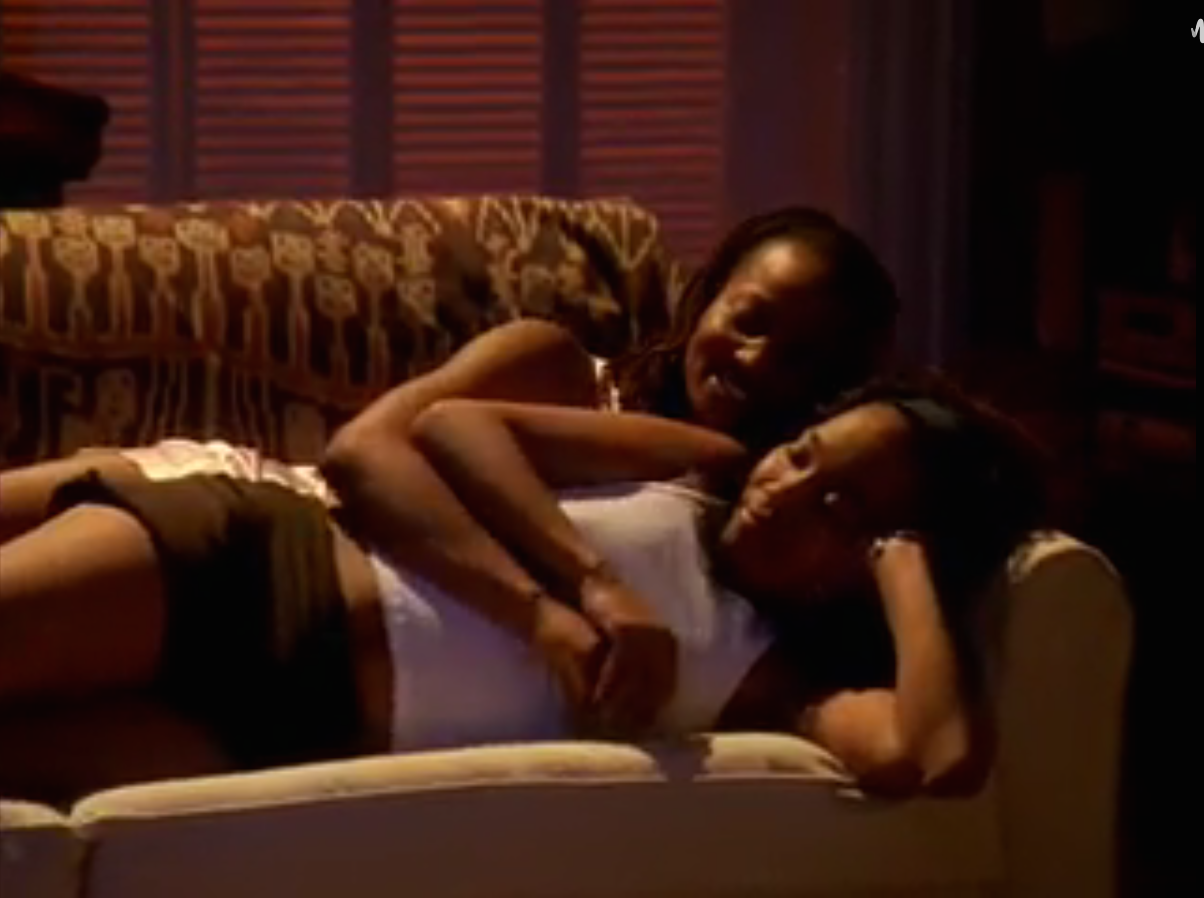
That the show offers up, as early as the show’s fourth episode, two mirrored visions of same-sex domesticity (in Omar and Brandon, and Kima and Cheryl) shows the richly diverse and textured world David Simon created. Omar’s homosexuality is obviously a point of contention for his enemies. His sexuality alone (“he had a stable of boys” we learn) doubles the bounty on him after stealing some drugs from a local gang. Yet, the fact that the show sets this conversation about his hit in an all-male space (a basketball court) with characters sharing a shirtless homosocial exchange ironizes the very homophobia that drives it. Kima, who only the episode before had come out to McNulty (“It’s not like I wave a dyke flag, y’know?” she tells him, downplaying her own coming out) is here presented in pure domestic bliss with her girlfriend, sharing a tender moment together by the time the episode ends. It’s refreshing for its utter mundanity. Sexuality, it turns out, is just one side of these multi-faceted characters, not even the center of their own storylines.
Carnivàle - “The River” (October 26, 2003)
Even after just one episode (or perhaps because of it), I feel like I should sit down and read up on everything about Daniel Knauf’s ambitious, dizzyingly opaque two-season wonder, Carnivàle, in order to better understand it. Which I sort of did. This strikes me as the type of series that, had it been released as a book (the very language Knauf uses to describe its various two-season arcs), it’d have come equipped with endless appendixes rivaling those attached to JRR Tolkien’s Lord of the Rings trilogy. Thankfully, I don’t have to make sense of the intricate mythology to appreciate the show’s treatment of Sofie (Clea DuVall), the bicurious tarot reader we’ll be discussing today.
In “The River” we see Sofie, a lonesome girl with a mute mother with whom she speaks telepathically, slowly grow closer to Libby (Carla Gallo), one of the “cootch” (stripper) dancers in the carnival. Dreaming of Hollywood and its stars, Libby dyes her hair platinum blonde and goes to Sofie to get her fortune read; their newfound friendship finds Sofie being protective of her “lighthearted and carefree” friend: “people think you got wild notions,” she tells her, “but that’s because they don’t got no imagination of their own.” Their interactions grow from tender to potentially erotic. When Libby asks Sofie to head out to Hollywood with her and her dad, Sofie sees it as a way out of living a carnie life forever; is perhaps giving in to her attraction to Libby in itself another way out of her seemingly mundane life at the carnival?
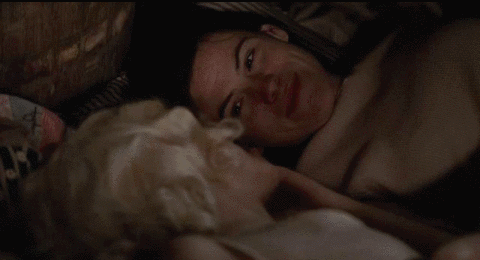
Here is where the casting of DuVall might further illuminate Sofie’s inner turmoils. Long associated with queer characters and films (But I’m a Cheerleader, Girl Interrupted, The Laramie Project, Itty Bitty Titty Committee, AHS: Asylum, among others), Duvall brings a queer sensibility to Sofie. You can see it in the way her eyes linger on Libby, her protective nature belying a deeper attachment to that daydreaming gal. That she later goes on to kiss Libby in a later episode, and sleep with Ben the following season, make her the type of character we could label as “bisexual” were it not anachronistic given the show’s Dustbowl 1930s setting. That said, neither the framing nor the context of these interactions suggest condemnation. If anything, these Libby/Sofie scenes feel like organic character developments amidst a show fascinated with other transgressive and unlikely pairings.
The Sopranos - “Unidentified Black Males” (May 2, 2004)
It wouldn’t be an HBO history without the David Chase series that catapulted the cable network to where it is today. The Sopranos, the first cable drama to win the Emmy for Outstanding Drama Series, is one of the most sustained examinations of masculinity ever put on screen. Tony Soprano, the ultimate male anti-hero of this new Golden Age of television, presides over a number of equally repressed and aggressive macho Jersey men. Thus, while shows like Oz and The Wire put LGBT characters at their center, The Sopranos didn’t center on an overtly gay storyline until Vito (a married family man) is outed in the show’s fifth season.
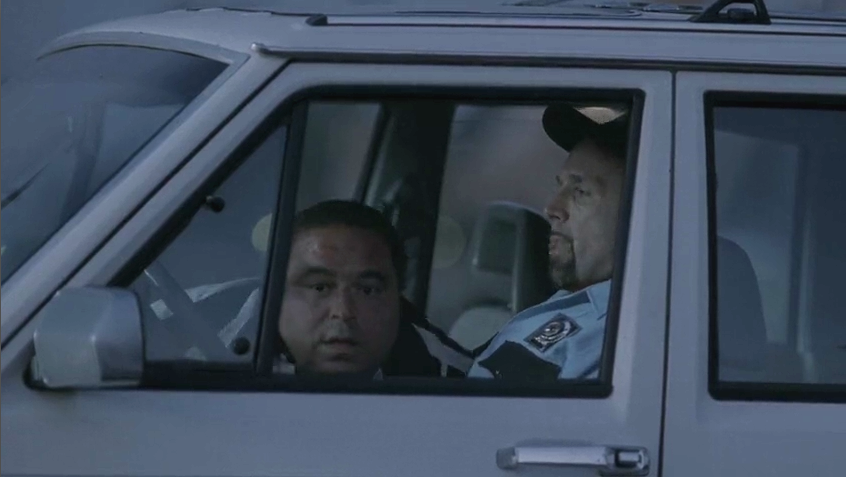
The ninth episode of that season, culminates in Tony confessing to his therapist that he cannot even admit to missing a job seventeen years earlier for having suffered a panic attack after a fight with his mother (and not, as he had admitted before, being jumped by some “unidentified black males”). He bemoans the fact that he’s “a robot to my own pussy-ass weakness,” what with the way his emotions get to him. This code of masculinity runs through the entire series, but it’s not surprising it is so central to this particular episode, which sees that very violent code be brutally connected to issues of homosexuality.
At the construction site where Tony has found his soon-to-be son-in-law a job, we see the “mezzogiorno codes of conduct” under which the men of The Sopranos abide by. It all begins with light ribbing and ends in violence:
“You should talk! That skank I saw you with. This girl’s fucking mustache! It must have been like kissing a fireman.”
“Well, you oughta know, sweetie.”
“What’d you say?”
“Nothing! We’re just breaking balls!”
“Here, do me a favor. Hold this?”
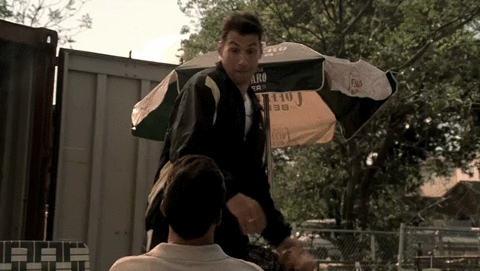
This is the type of male camaraderie that terrifies Finn de Trolio, Meadow Soprano’s boyfriend. That he then catches Vito blowing a security guard soon thereafter and begins fearing Vito will either come on to him or, worse, kill him (why else invite him to bat night at a baseball game?) carefully helps align masculinity and heterosexuality in ways that are crucial to the show and that continue throughout Vito’s long arc after this reveal.
That’s four fully fleshed out LGBT characters that run the gamut in terms of background, race, employment, relationship status and comfort with their own identity; none devolve into mere stereotypes (all, we’d might say, actually push against them). Heck, even just talking about The Wire, we have not one but two (!) central roles featuring non-white LGBT (!!) characters who are complex creations and aren’t mere window-dressing. In 2002. When do we see numbers like that again: True Blood, maybe? This is why it’s not TV, it’s HBO.

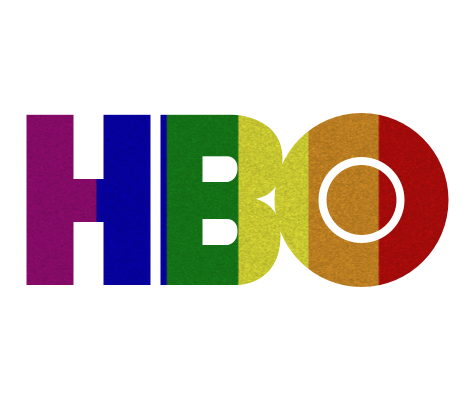
Fun Awards Fact: Both The Sopranos (in 2000 and 2001), and the The Wire (in 2004) won the esteemed Peabody Award, given to the best in media in a given year. While HBO had long won various Peabody awards for their nonfiction films, The Sopranos win in 2000 was the first one for a drama series. Three other HBO properties we’ve looked at also won Peabody awards: The Larry Sanders Show in 1994 and 1999, Citizen Cohn in 1993 and Common Threads: Stories from the Quilt in 1990.
Next Week: We continue looking at HBO’s TV output in the mid-2000s. These dramas showed us continued attempts at fleshing out complex LGBT characters, but what of HBO’s comedies? To answer that we’ll look at Sacha Baron Cohen’s Da Ali G Show, the bro-tastic Entourage and cult-fave The Comeback, all of which had prominent gay roles that skirted the line between stereotype and caricature.